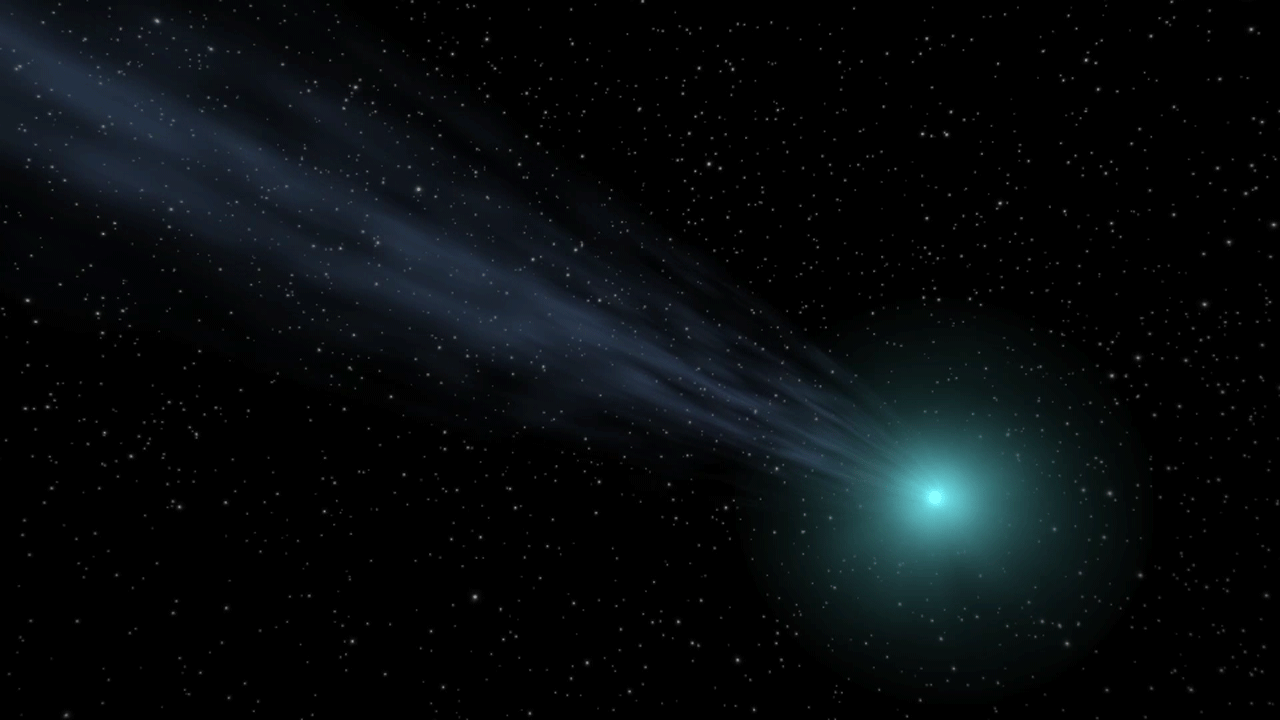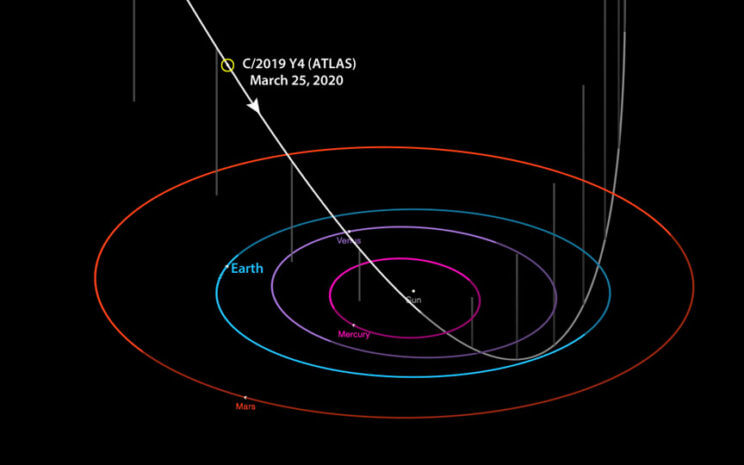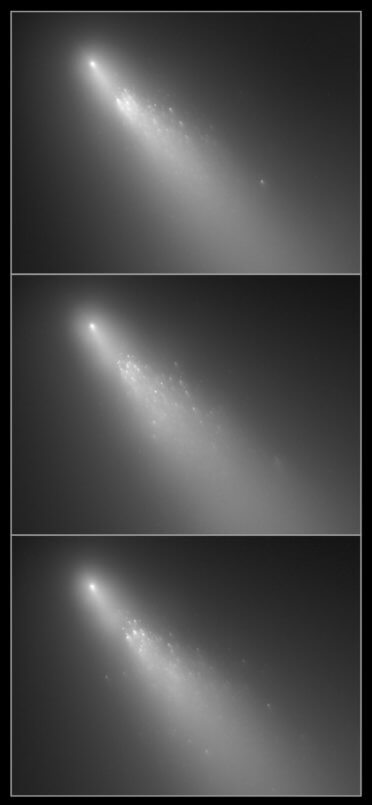For weekly updates on Comet ATLAS, please visit McDonnell Planetarium Night Sky Updates.
After a two-decade drought of bright comets in the Northern Hemisphere, newly discovered Comet ATLAS stands a chance of brightening our sky – and our lives – this spring.
Comets are frozen hunks of gas, ice, and dust that orbit our Sun in long, elliptical orbits. When a comet loops close to the Sun, it heats up, creating the brilliant tails that these celestial objects are known for. NASA currently tracks over 3,500 comets in the Solar System but estimates that there may be billions of comets orbiting our Sun in the Kuiper Belt and Oort Cloud.

Animation of a comet.
Credits: NASA/JPL-Caltech
It has been over 20 years since sky watchers of the Northern Hemisphere have witnessed one of these frozen visitors without the help of telescopes or binoculars. Well known Halley’s Comet last visited Earth in 1986, and the most recent comet bright enough to be seen with the unaided eye in St. Louis was Comet Hale-Bopp during the spring of 1997. Comet PanSTARRS in 2013 made a brief appearance during the evening twilight but was too low to be appreciated by most casual observers.
Could our wait finally be over?
Comet C/2019 Y4 (ATLAS) was discovered in December 2019 by the NASA-funded Asteroid Terrestrial-impact Last Alert System. Astronomers have calculated that the dirty snowball appears to be following a similar orbit to the “Great Comet of 1844.” This path suggests that Comet ATLAS takes nearly 6,000 years to orbit the Sun and travels to a distance of roughly 57 billion miles away at its farthest point.

Since its discovery, Comet ATLAS is rapidly increasing in brightness as it continues its journey toward the Sun. The beautiful green comet is currently passing through the constellation Ursa Major, near the Big Dipper. Comet ATLAS is already visible with the aid of a telescope and is predicted to brighten throughout April. If this pattern continues, estimates suggest that the comet could be visible to the unaided eye in St. Louis by mid-May.
Comet C/2019 Y4 (ATLAS) will come closest to Earth on May 23, 2020 with perihelion, or its closest approach to the Sun, on May 31, 2020.
Current models from NASA’s JPL Horizons predict that Comet ATLAS may reach a maximum brightness of magnitude -5 at perihelion – bright enough to be seen during the daytime with a safely shielded telescope!
Alas, predicting the brightness of comets is a tricky business. The final brightness of Comet ATLAS remains unknown and will depend on a number of factors. The size and composition of the object’s nuclei will determine how much sunlight the comet is able to reflect. Additionally, its position relative to the Sun and Earth on its closest approach will effect how bright the comet appears. If the object passes too close to the Sun, it is possible that the Comet ATLAS will break apart and spoil the show for anxious observers.

Credit: NASA/HST
The best is yet to come?
In ancient times, comets were often seen as “evil omens” due to their seemingly unpredictable nature. For many of us currently quarantined due to the COVID-19 pandemic, Comet ATLAS serves as a welcome distraction and bright beacon in this dark time.
Will Comet ATLAS live up to the excitement? All we can do is wait, wash our hands, and keep looking up.






